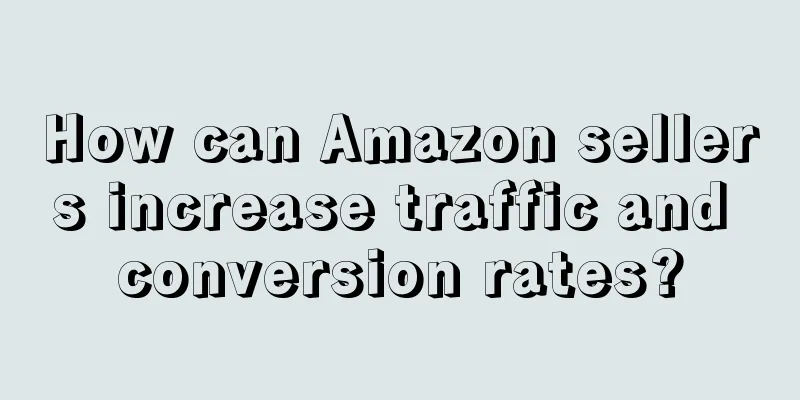As we all know, traffic and conversion rate have always been the two eternal driving forces for e-commerce sales, and are also the focus of sellers' long-term attention. Sellers all know the importance of traffic, but if the ultimate goal of "conversion" is not achieved after attracting traffic, the previous operational work will be wasted. If the conversion is sluggish for a long time, the introduction of subsequent traffic will require sellers to pay more costs. Therefore, the importance of increasing traffic and conversion rate is self-evident.
The love-hate relationship between traffic and conversion rate
1. Problem
New product listings are often flooded with traffic, but sellers simply fail to convert those visitors into paying customers. To try and fix this, many sellers spend a lot of money on paid advertising, thinking that if they increase traffic then they will increase sales, which of course they are correct. But soon after, the seller found that the conversion rate was still low, which eventually led to stagnation of the store.
2. Problem
Some sellers have great conversion rates but low traffic on their listings. In this case, some sellers simply don’t try to solve the problem and just grasp at the straws they have, hoping that one day the traffic will miraculously improve, but this rarely happens unless your product is too popular. In this case, some sellers will raise product prices to make more profits and continue to operate their stores.
A best-in-class conversion rate not only means that your products will generate more sales from your current traffic levels, but it will also increase your store's influence in Amazon search and media communications over time. This creates a flywheel of more exposure, more traffic, more sales, more customer reviews, more brand awareness and even higher conversion rates. That’s why conversion rate optimization must be a priority for all Amazon sellers.
How to increase product traffic and conversion rate?
1. Title
The title needs to be short, clear, and punchy, describing as clearly as possible what the product is and the benefits it will provide to customers. The highest performing keywords must be strategically positioned so that they can be better indexed by Amazon’s A9 algorithm, which will improve your store’s sales ranking and effectively drive sales pages. The first five words should make up your canonical URL, which will rank higher in Google’s search engine. Another benefit of using this approach is that it breaks up the usual title format and makes it easier to remember. If customers can’t tell what your product is at a glance, then your title is a failure.
2. Image
In a recent survey, 65% of buyers revealed that they make purchase decisions based on images alone. Therefore, the pictures chosen by sellers should preferably be professional high-definition photos that are closer to the real object. If you add some creative photography methods, the product will be even more effective. Some sellers will choose cheap, low-pixel photos, which can only put your own store in an embarrassing situation.
3. Key points
The products you choose should focus on benefits, not features. No one will scoff at your product’s features; they just want to know how it can improve their lives. So sellers should add other high-performing keywords to your products, but remember not to repeat them because they only rank once. Amazon has given sellers five key points to consider, make sure you use them as much as possible.
4. Description
If your brand doesn’t have a logo, then you need to focus on content. Sellers should use HTML code when describing their products, which will ensure greater traffic to the products. When describing a product, sellers must enhance users’ assumptions about product usage and stimulate users to purchase. When describing the product, they must associate the product’s users and usage scenarios with the buyers. At the same time, they must consider the benefits of the product’s different functions from the buyers’ perspective and write them down in a simple, clear and concise manner. In addition, if the product has relevant qualification certificates, or the seller has its own unique product advantages compared to other peers, this should also be written down. This can reduce users' purchasing hesitation and enhance their purchasing confidence.
Traffic and conversion rate issues are just the tip of the iceberg of the problems faced by many Amazon sellers. A successful Amazon store requires sellers to study hard and work hard to make their products and stores stand out in the vast Amazon mall.

